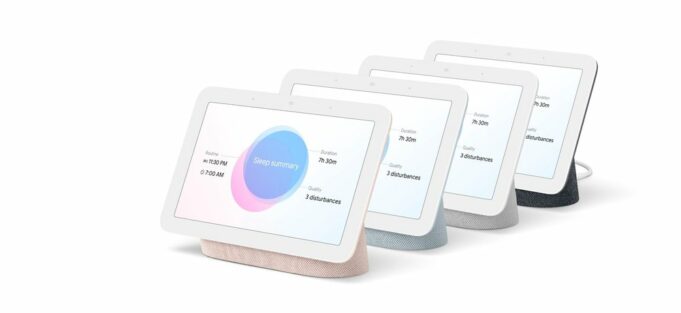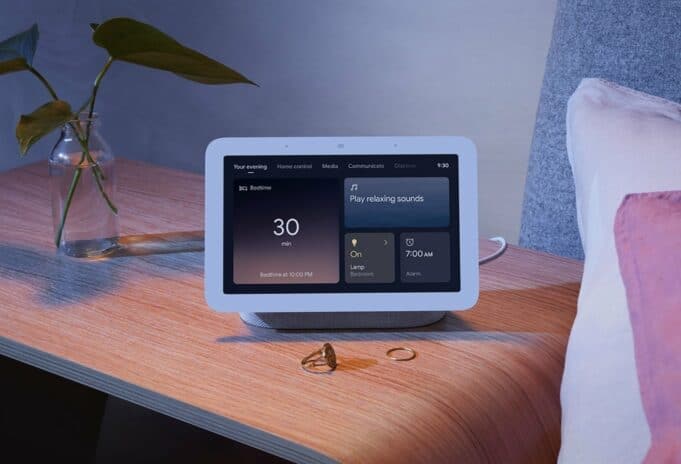Amazon: We need more ways to track people.
Google: Hold my beer.
Don’t you like it when robots watch you sleep? Well that might not exactly be the case here. But with the new (2nd gen) Google Nest Hub for 2021 that scenario feels pretty close. And I’m sure that’s going to be of concern for privacy advocates and lobbyists alike.
Starting March 30 you can order Google’s latest smart display — the smallest one in the family featuring a 7-inch display — for $99 USD.
The key feature per the Google Blog announcing the Nest Hub is a built-in radar sensor (Soli) that can monitor things like micromovements, which in turn can help the Hub determine when and how well you’re sleeping.

According to Google you set the Nest Hub somewhere close to your bed. A night table is a good place. From there you initiate a setup for the “Sleep Sensing” feature. In addition to radar, the device also uses its microphones to detect things like snoring and coughing and other types of disruptions throughout the night.
“Sleep Sensing tracks how long and well you’ve slept, then provides personalized recommendations for a better night’s sleep.”
Further, the Nest Hub is able to sense the room’s brightness level in addition to the ambient temperature — all things that can negatively impact the quality of good night’s rest.
Thankfully, at least for many buyers, there is no camera in this particular Nest Hub model.
As expected the 2021 Nest Hub also includes several refinements including:
- Flush bezel
- 50% better bass performance
- Addition of a 3rd microphone for better voice command responsiveness
- Faster processor
Also it’s now available in a light blue “mist” color.
Per Google:
“Every morning you’ll receive a personalized sleep summary on your display, or you can view your sleep data anytime on the Nest Hub by asking, “Hey Google, how did I sleep?” Sleep Sensing can also connect to your Google Fit app on Android and iOS devices, so you can see your sleep summary alongside your other health and wellness information.”
Stark Insider Take
(above is the Soli sensor in action)
As the smart speaker and smart display wars mature look for the likes of Apple and Amazon and Google continue to find ways to differentiate their products by using all manner of AI and lifestyle-type innovations. Hence: sleep tracking.
Sleep tracking continues to be a cornerstone of wearables. Devices such as the Apple Watch and Fitbits all feature some variation of the feature. The idea is, of course, to help us get quality rest in order to live better lives.
So it’s not much of a surprise to see sleep tracking make its way to smart displays. After all, there’s a strong chance we already have on on our night stand. Using its capabilities to further enhance the data available to evaluate sleeping patterns does make a lot of sense.
Regarding privacy I should note Google states that audio and data is not stored on its servers, and instead is processed locally. Also, Nest Hub “detects motion, not specific bodies or faces.” In addition, there’s a hardware switch that you can use to turn off the microphone.
The other trend we’re seeing when it comes to the smart display: the battle for the smart home hub. One device to rule (or control) them all.
Over the past 18 months or so, most notably Google (Nest Hub) and Amazon (Echo) have been adding smart home interfaces to devices. In one place you’re able to control music, lights, the thermostat, and other smart devices across the home. The idea is that with so many third party devices and apps, it’s convenient and perhaps less confusing to control everything from one hub. You’ll note in its marketing copy Google prominently advertises the Nest Hub as “Simple smart home control.”


